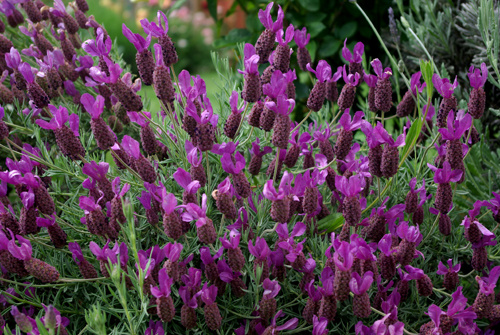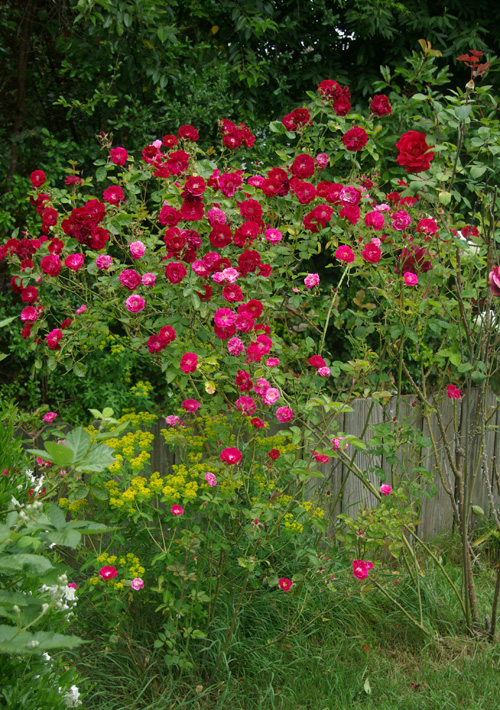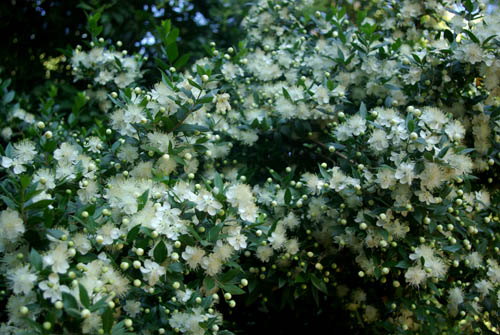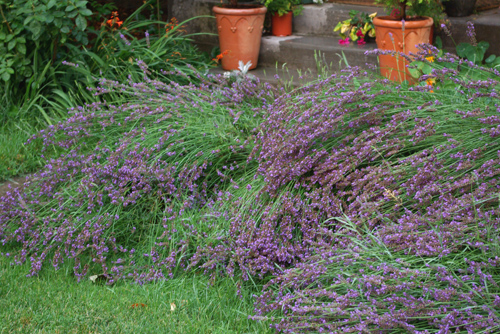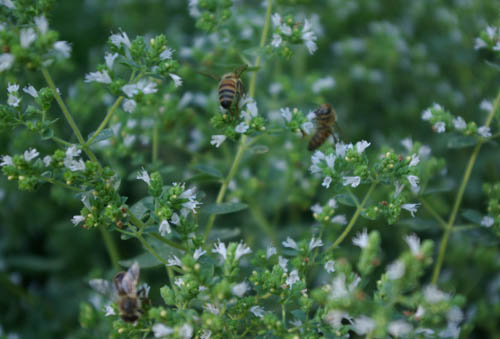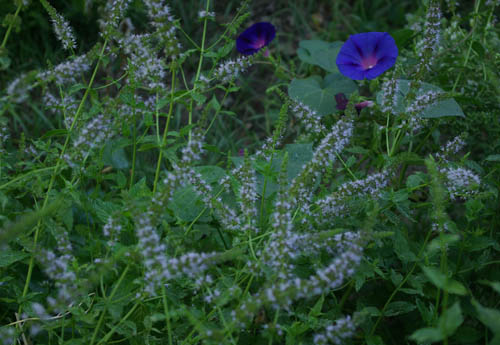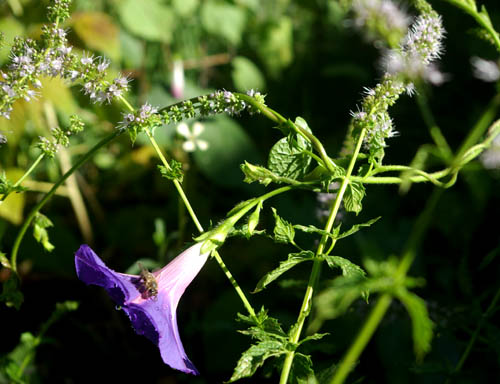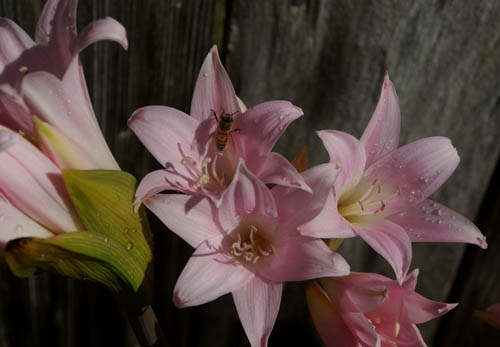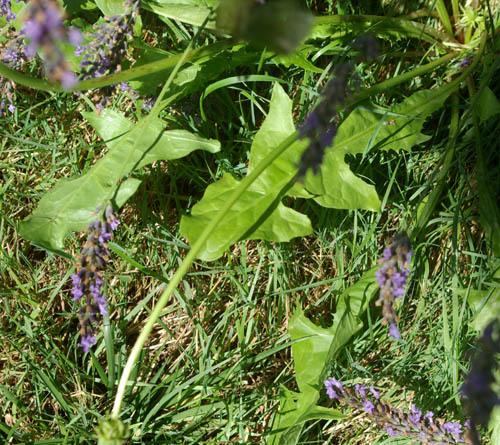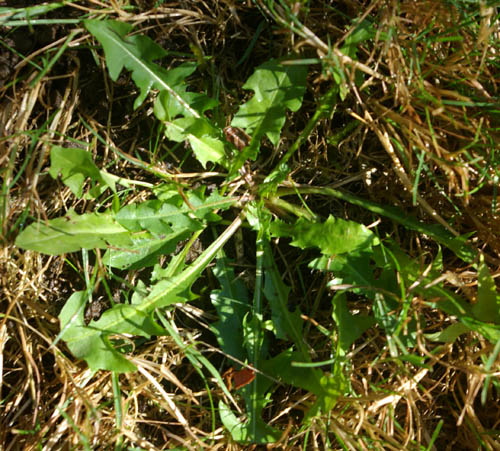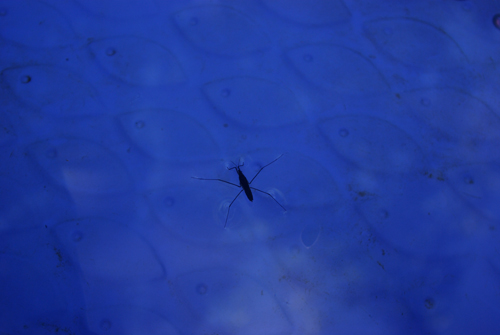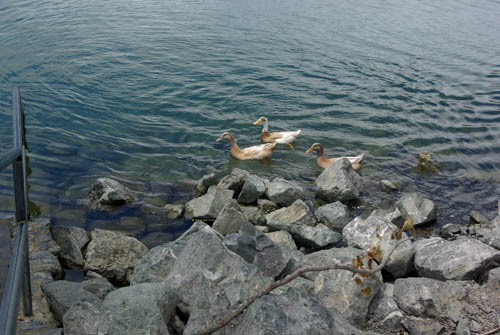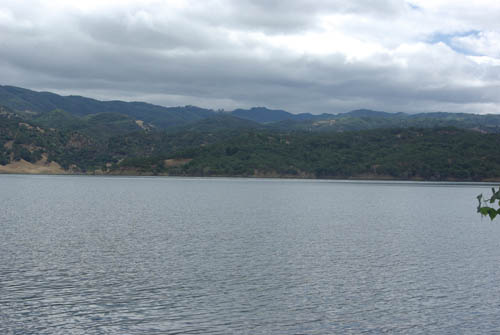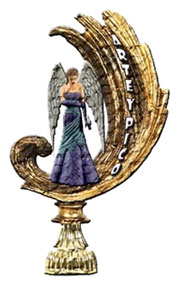As the sun falls further to the south as it crosses the sky in anticipation of the end of summer I suppose I have suddenly become nostalgic, particularly about the bees which live in abundance in my garden from spring through fall. Soon I will miss them so and will be thinking of their return next year. In this quiet reverie I found myself thinking of the path they have fruitfully traced about my garden and determined to make myself a list, and then trace photographically, of the treasures that beckoned and welcomed them in their need to collect pollen for their hives, spinning it into the honey that I treasure more than you can imagine, I’m sure. In assembling this kind of bee map I discovered I can be quite proud of myself, more than I realized, for while I have not systematically “created a bee garden” with the requisite research, I have inadvertently done quite well. Take a gander!
First order of business for bees in early spring is the borage, as pictured above. It grows in abundance. It freely reseeds and I let it. So wherever it wants to grow, it does and the bees are most appreciative.
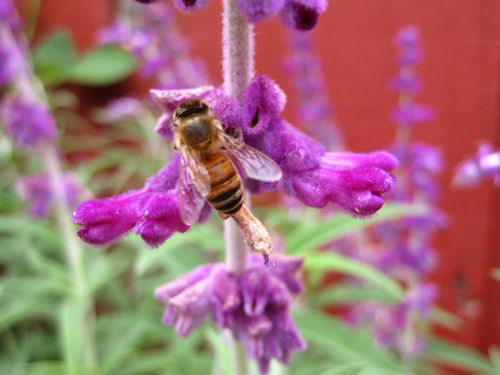
bee in lavender
Next in line, I believe are the lavenders that grow in the back garden.
About this time the Dr. Huey roses are blossoming. This is not a favorite of the bees. I don’t find bees nearly as much in love with roses as am I. But they will do.
Following the emerging of Dr. Huey is the true myrtle, one of my very favorites here, and the bees would certainly agree!
About this time the hollyhocks now are ripening and budding and opening.

pink hollyhock with bumblebee
Concurrent with the hollyhocks is the trumpet vine which was given a free hand long before I arrived here so it is amazing abundance, wending its way through trees, into the rose arbor. I was delighted to catch this bit of action! Look very closely!
Now, wait for it!
Out she pops. 🙂
Midsummer brings the opening of the very old and abundant display of lavender in the front garden. It’s a treat, I assure you! This large old stand is a mass of bees from early in the morning until dusk for over a month. I have to make a point of watering very early so as not to interrupt their diligent work! 🙂 I adore this time when they are there. I like to bend down and put my ears close to them and listen to their lovely buzzy sister song. Heaven! And they never ever mind.
As the lavender is at last spent and moving towards its dormancy the mint and unlikely oregano are now in full blossom. The bees are particularly fond of the oregano! Who knew?
This little bee is exploring a lovely purple morning glory, wet from an early morning watering…
And this morning I discovered that the newly emerged naked ladies are a new favorite with my cherished little creatures!
What remains in bloom will sustain the bees throughout the end of this season. And then their friendly visits will recede, as they set about the work of tending the hive and the queen, preparing for next season.
I hope you have enjoyed the Bee Map of my garden! And I now find myself very curious what path the bees in your garden follow throughout the season! What treasures would the bees find from week to week and month to month in your cherished garden?
Love and honeybee blessings,
Kathryn xoxo
Book Notes: Happy to announce that Ode Magazine will be publishing an excerpt from Plant Whatever Brings You Joy in an upcoming issue in both America and Holland (in Dutch!). Also Western North Carolina Woman will be publishing a series of excerpts from the book, largely from my time in Asheville, NC.
If you find this blog of interest I hope you will consider purchasing a copy of Plant Whatever Brings You Joy: Blessed Wisdom from the Garden. Actual books are available at Estrella Catarina. The Kindle version is available in the US, the UK and in Germany in the Kindle store.
Posted on August 15th, 2011 by Kathryn
Filed under: Animals | 9 Comments »


